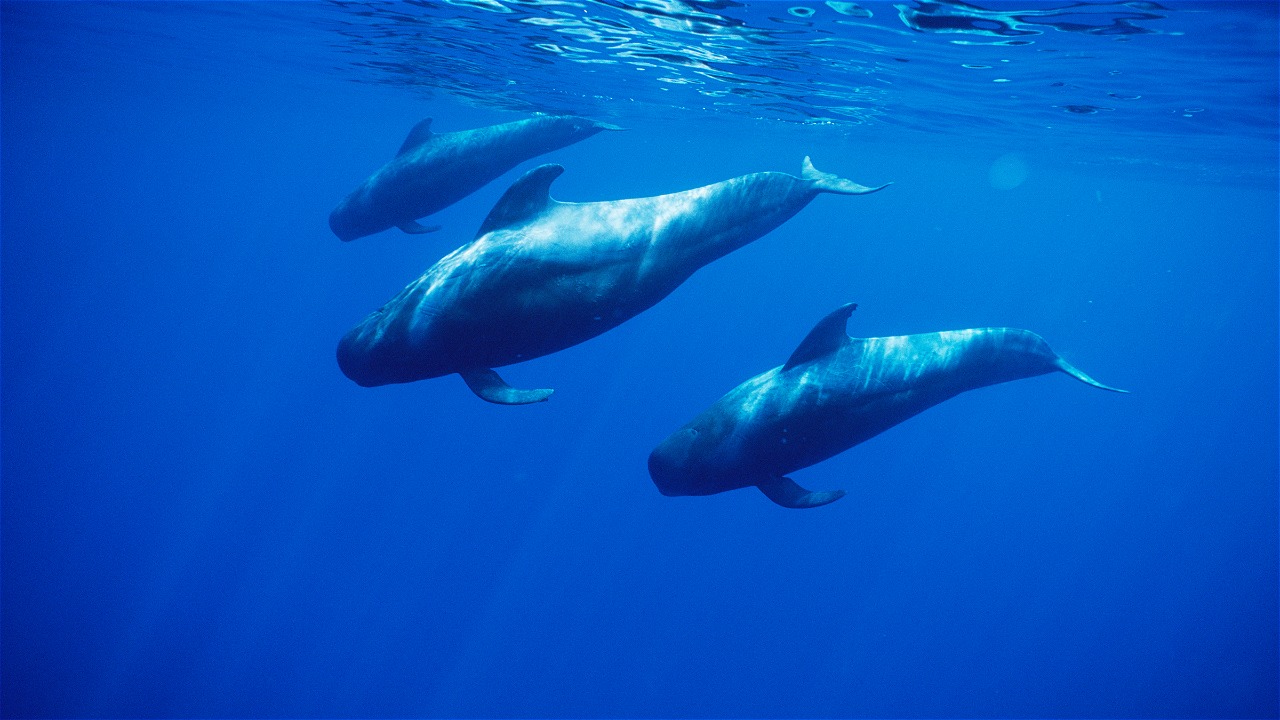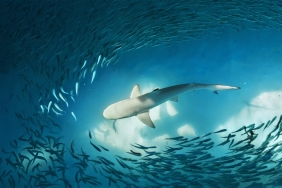PILOT WHALE STRANDED IN OHOILILIR SOUTHEAST MALUKU
By: Taufik Abdillah and Veronica Louhenapessy
After 4 days of the whale being trapped, a resident of Ohoililir reported to the WWF-Indonesia Inner Banda Arc office. This was the first time a whale was trapped in the waters of Ohoililir Village, but not on Kei Kecil Island. About 1.5 years ago, an unidentified whale was reported stranded on Ngaf Island, which is not far from Ohoililir Village.
When the WWF team arrived at the location the light was already very minimal. The whale swam about 700 meters from the shoreline. At first glance, there were scars on the whale's back, but the mammal was still able to swim actively between the seaweed cultivation ropes and regularly take breaths to the surface. As it was getting dark and it was not possible to take any action, we went home with an underwater photo of the whale taken by a French tourist. We told the WWF and DKP staff that we would return the following day to herd the whale into the deep sea.
This whale measuring about 4 meters is a species of pilot whale (Globicephala macrorhynchus) commonly found in tropical and subtropical waters. Pilot whales live in groups and rarely swim alone. The whales in the waters of Ohoililir Village are thought to have gotten separated because they were chasing squid to the shallows surrounded by coral reefs. As a result, the whales were disoriented and could not return to the open sea.
At 8am the next day, we received the bad news. The whale was reportedly already in a dying condition because it was entangled in a citizen's net while trying to get out of the shore. The WWF team immediately went to the location to help save the whale. Unfortunately, when our team arrived the whale was already dead on the shore. According to residents, they had tried to free the whale from the entanglement.
The attempt failed and the whale's condition seemed to worsen. Residents were worried that if the whale died in the water, the oil content in the whale's body would damage their seaweed. Reluctantly, the villagers decided to tie the tail of the dying whale and drag it to the shore. The dead whale was then distributed to all villagers for consumption.
After 5 days trapped on the shore of Ohoililir Beach, the pilot whale could not be rescued. Although the occurrence of stranded whales in the Kei Islands is very rare, WWF is considering conducting training on handling stranded marine mammals to coastal residents. The initiative of residents to notify WWF is a good start. It is recommended that residents immediately report incidents like this to the authorities such as DKP or PSDKP so that stranded marine biota can be saved.< br />
Readers who want to know how to handle stranded marine mammals can download the guide here





